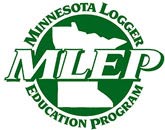What is Arboriculture?
Arboriculture is both a science and a practice, but it’s all about nurturing trees, shrubs and other woody plants.
The science of arboriculture studies how trees grow and respond to their environments, as well as the techniques used to cultivate them. The practice of arboriculture is executing those techniques used to maintain trees, such as selecting which trees to plant, applying fertilizer, spraying to control insects and diseases, cabling and bracing, diagnosing tree ailments, removing trees and pruning.
Those who practice arboriculture are called arborists. Arborists encompass both the physical skills and the knowledge needed to successfully care for trees. It’s also important to note that arborists are different from landscapers. While there are some landscapers who have been trained as an arborist, generally the two professions are very different. (For more on that topic, check out our “What’s the Difference Between a Landscaper and an Arborist” article.)
History
The basic principles of arboriculture are ancient. According to the Encyclopaedia Britannica, early Egyptians transplanted trees with a ball of earth and originated the practice of shaping the soil around a newly planted tree to form a saucer to retain water, which are both still practiced. In addition, in 300 BC the Greek philosopher Theophrastus wrote ”Inquiry into Plants”, where he discussed transplanting of trees and the treatment of tree wounds.
Take Care of Your Trees
Proper tree care is an absolute must for any property owner. Well-cared-for trees not only add beauty to your yard, but they can also up the value to your property. Good landscaping can increase a property’s value by up to 20 percent. On the other hand, mistreated or decaying trees are a liability and can decrease property values because they’re considered an impending expense for homebuyers.
Pruning or removing trees can be dangerous work, so we definitely recommend hiring a professional arborist. If you’re set on DIY, check out our Tips section for pruning dos and don’ts, and other useful information.











